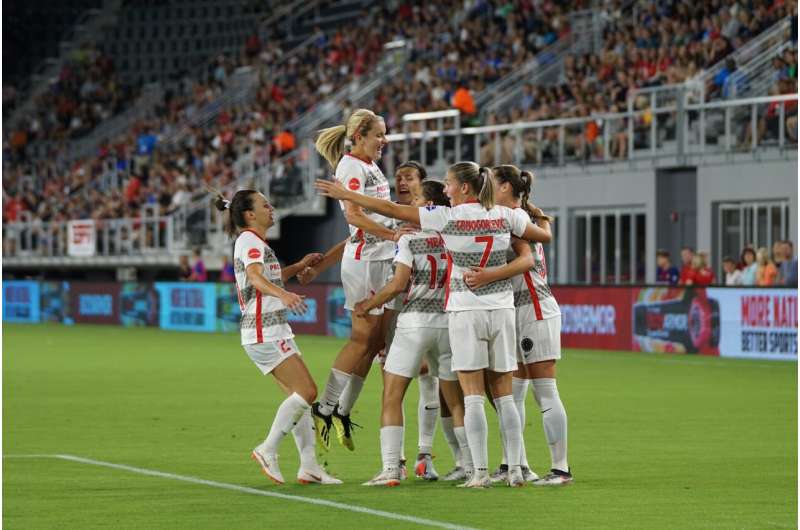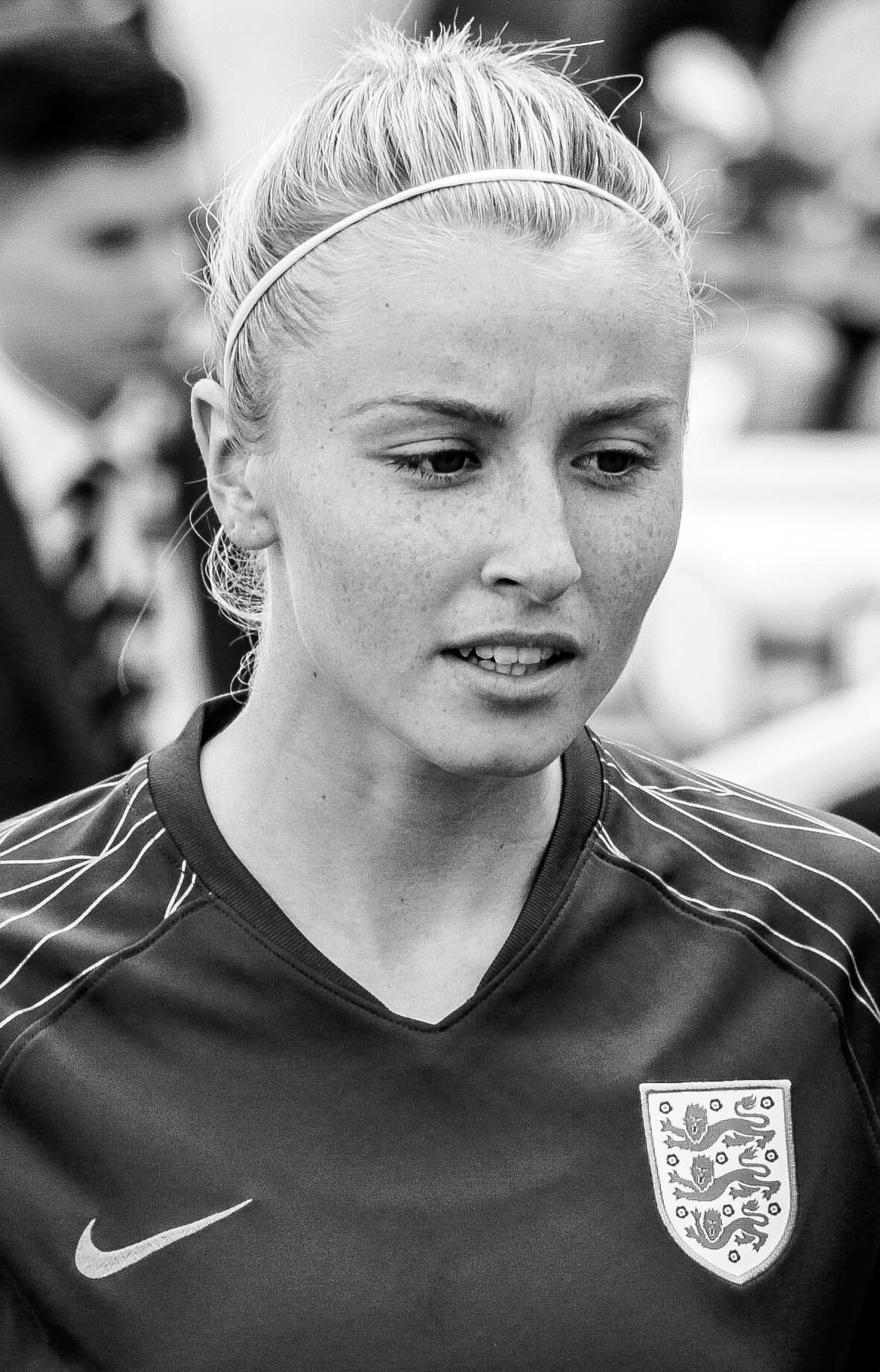Boots and balls made for men an injury risk to women footballers
Women football players require specifically tailored products such as kit, boots, and balls in order to optimise their performance and safety on the pitch, according to a paper published in Sports Engineering. The authors conclude that, while some progress has been made in addressing the equipment requirements of female players, essential gaps in research, development, and production remain in women’s football. — Springer

Few football products are designed to suit women’s needs, including boots, a paper says. Photo by Jeffrey F Lin on Unsplash
By Philippa Roxby, Health reporter BBC News November 15, 2022
Sports scientists are highlighting the lack of football kit designed for women, saying the use of boots and balls created for male players could be putting them at higher risk of injury.
Knee-ligament injuries in women are causing concern at an elite level.
Despite some progress, the researchers say no large boot manufacturer has yet invested in a design to suit women.
The profile and popularity of women’s football in the UK has soared since England won Euro 2022.
But most products are still predominantly designed for men’s football and little attention has been paid to the requirements of the women’s game, a paper says.
| Stress fractures |
Writing in the journal Sports Engineering, a group of sports and exercise researchers, doctors and staff involved in the elite women’s game — including England captain Leah Williamson — point to the need for more kit and technology tailored to women’s needs and body shape.
For example, football boots fail to account for the fact women’s feet, heels and arches are shaped differently.
And wearing boots designed for men is causing blisters and stress fractures in elite female players.
Women also move and run in a different way to men and yet the length of studs on boots are designed around male movement and traction.
This increases the risk of women getting their boot stuck in the surface and an injury being caused, author and sports rehabilitation lecturer Dr Kat Okholm Kryger, from St Mary’s University, Twickenham, says.
Another factor in women’s injuries could be playing “on uneven surfaces where men’s teams have played the day before”, Dr Kryger says.
Many major manufacturers are reportedly developing boots specific to women in time for the World Cup in 2023.

Leah Williamson with England in 2019. James Boyes, Wikimedia Commons
Tottenham Hotspur club doctor Craig Rosenbloom, who is also a co-author of the paper, says anterior cruciate ligament (ACL) knee injuries are “at least twice as common in elite female footballers when compared to male footballers”.
This is putting “a huge burden” on the players and the clubs, he adds.
Most elite male footballers return within seven to eight months of the injury — but for elite female footballers, it is usually at least 10.
“Elite female football squads are usually smaller than male squads, so missing players for longer has a big impact on player availability,” Dr Rosenbloom says.
| Dark-coloured shorts |
The paper also highlights the need to design more comfortable and practical sports bras, shorts and hijabs.
A number of clubs, including Manchester City, are switching to dark-coloured shorts for women because of worries over visible leakage when players are on their period.
The FA says it wants players to feel fully supported on this issue and any feedback from women will be fed into future kit designs.
The authors say technology, such as devices tracking health, performance and menstrual cycles, needs to be better designed for women too.
And they call for more research into female players’ concussion risk from heading the ball.
“There’s a higher level of microtrauma in the white matter in women’s brains,” Dr Kryger says.
“That’s not seen in men’s football — so there could be a medical reason to change the ball.”
Source BBC News
| References |
Ten questions in sports engineering: technology in elite women’s football, Katrine Okholm Kryger; Athol Thomson; Alicia Tang; Nicola Brown Georgie Bruinvels; Craig Rosenbloom; Sean Carmody; Leah Williamson; Naomi Datson; Elena Jobson; Ritan Mehta. Sports Eng 25, 25 (2022). https://doi.org/10.1007/s12283-022-00384-3. Full text, PDF
| Further reading |
Training in women soccer players: A systematic review on training load monitoring, Costa JA, Rago V, Brito P, Figueiredo P, Sousa A, Abade E, Brito J. Front Psychol. 2022 Jul 29;13:943857. doi: 10.3389/fpsyg.2022.943857. Full text, PDF
Prevention of Non-Contact Anterior Cruciate Ligament Injuries among Youth Female Athletes: An Umbrella Review, Mattu AT, Ghali B, Linton V, Zheng A, Pike I. Int J Environ Res Public Health. 2022 Apr 12;19(8):4648. doi: 10.3390/ijerph19084648. Full text, PDF
Incidence of injury in adult elite women’s football: a systematic review and meta-analysis, Mayhew L, Johnson MI, Francis P, Lutter C, Alali A, Jones G. BMJ Open Sport Exerc Med. 2021 Jul 13;7(3):e001094. doi: 10.1136/bmjsem-2021-001094. Full text, PDF
Injury prevention knowledge, beliefs and strategies in elite female footballers at the FIFA Women’s World Cup France 2019, Geertsema C, Geertsema L, Farooq A, Harøy J, Oester C, Weber A, Bahr R. Br J Sports Med. 2021 Jul;55(14):801-806. doi: 10.1136/bjsports-2020-103131. Epub 2021 Jan 4. Full text, PDF
Prevention of non-contact anterior cruciate ligament injuries in soccer players. Part 1: Mechanisms of injury and underlying risk factors, Alentorn-Geli E, Myer GD, Silvers HJ, Samitier G, Romero D, Lázaro-Haro C, Cugat R. Knee Surg Sports Traumatol Arthrosc. 2009 Jul;17(7):705-29. doi: 10.1007/s00167-009-0813-1. Epub 2009 May 19.
Prevention of non-contact anterior cruciate ligament injuries in soccer players. Part 2: a review of prevention programs aimed to modify risk factors and to reduce injury rates, Alentorn-Geli E, Myer GD, Silvers HJ, Samitier G, Romero D, Lázaro-Haro C, Cugat R. Knee Surg Sports Traumatol Arthrosc. 2009 Aug;17(8):859-79. doi: 10.1007/s00167-009-0823-z. Epub 2009 Jun 9.
Also see
Football: Sports experts call for kit designed for female players BBC
Women footballers not on level playing field for sports technology, study finds Science Daily
